What happens if you put too much oil in your car or truck during a flush and fill? The results can range from ‘not much’ to a full engine rebuild! Most of the time the symptoms you’ll see with overfilled engine oil is:
- Blue smoke near the tail pipe or engine bay
- High Oil Pressure light illuminated
- Rough idle or acceleration
- Puddle of oil underneath vehicle
- Oil “smell”
Oil is a critical component of your engine. Oil levels should be maintained so that your engine runs efficiently and has sufficient lubrication. Especially when you’re handling your own oil changes (and filling up in between oil filter replacements), it’s easy to put too much oil in the car. Find out what happens when there’s too much oil and what can be done about it.
How Does Too Much Oil Happen?
There is only one way that you can get too much oil in your car. When you use the oil fill port under the hood, you put oil in… sometimes you get distracted and put 5 quarts instead of 4 quarts in. Usually overfilling is caused by simple human error.
Oil can take quite a bit of time to make it through the oil galleries and move through the many parts. It will eventually make it to the bottom oil pan, which is where your drain plug is located. The oil pan is often referred to as the sump. As the oil travels, it coats everything.
When draining the oil, get the engine up to temperature before you evacuate the oil. When cold the viscosity is thick so it may not flow easily. For this reason, I like to do oil changes during the spring or summer because when it’s winter time, it sucks to change oil!
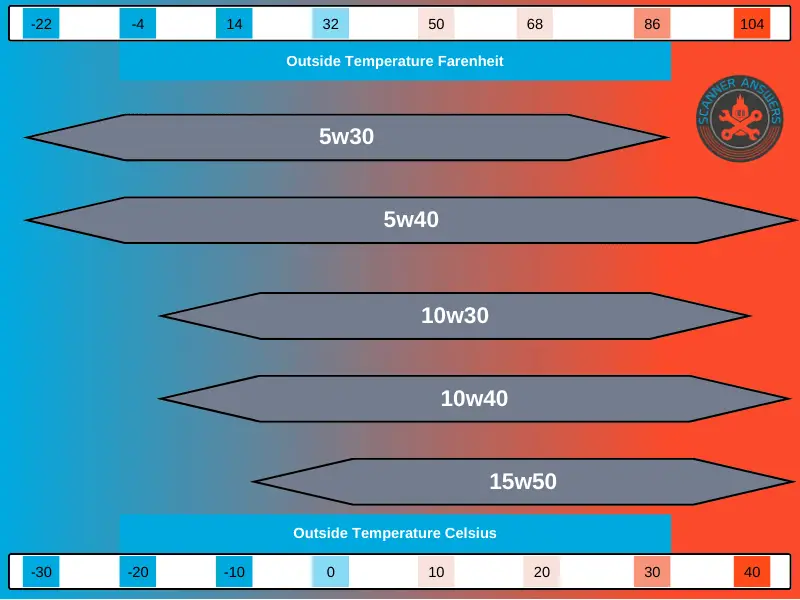
What Happens When You Put Too Much Oil in Your Car?
There are a few dangers when you put too much oil in your car.
First, it’s extremely wasteful. Engine oil can be quite expensive, and you’re pouring it in excess.
Secondly, the oil will need to find a release somewhere. It adds extra pressure, pushing at the various seals and gaskets around your engine. If one of these fails, you could be looking at some expensive repairs.
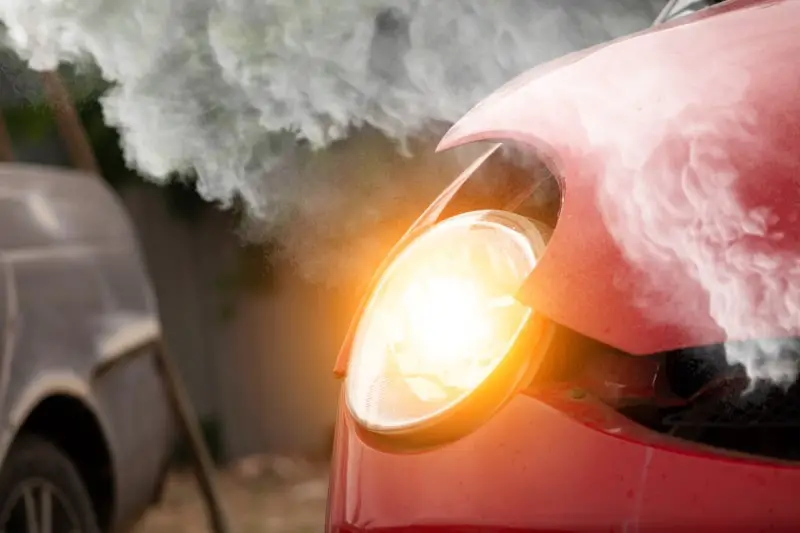
While it’s a worst-case scenario, the engine oil can heat up. Particularly if the oil spills on a hot exhaust manifold, it can cause a fire. Another way for a fire to start is because of a leak in the system. As the oil continues to leak, it can cause the engine temperatures to rise and overheat. As this happens, more fluids will leak. As they come into contact with the hot surfaces of the engine, it can all ignite, causing a fire.
Other Parts That Can Be Damaged
You may not just be damaging your engine when you add too much lubrication. You may also be creating other problems.
Spark plug fouling can happen when there’s excess fuel that doesn’t get burned off through engine combustion. The spark plugs become victims of the leaking oil. When these problems occur, you will have other engine problems, low fuel mileage, and more until these spark plugs are replaced.
Your catalytic converter can also be damaged because the oil causes clogging. It prevents the contaminants from being filtered. It can lead to smoke, issues with the overall performance, and even failing an emissions test if required in your area.
The oil pump may end up with too much pressure. When this happens, it can cause the oil to not make it to the filter. It can also lead to many other engine parts not being sufficiently lubricated because the pump isn’t forcing the oil through the oil gallery and the other components.
Essentially, anything that the oil drips on can be damaged. The more oil you have, the more parts you may end up having to replace over time.
How Much is Too Much?
There’s a specific oil capacity in your car’s engine. It depends on the engine type. You should know how many quarts/liters it will hold so that you don’t overfill it.
You can look in the owner’s manual for your car. Small four-cylinder engines will typically hold approximately 3.5 liters. Larger engines will require even more, sometimes upwards of 5 liters.
Amsoil has a great site where all you do is input your vehicle year/make/model/engine and it will tell you how much oil to add.
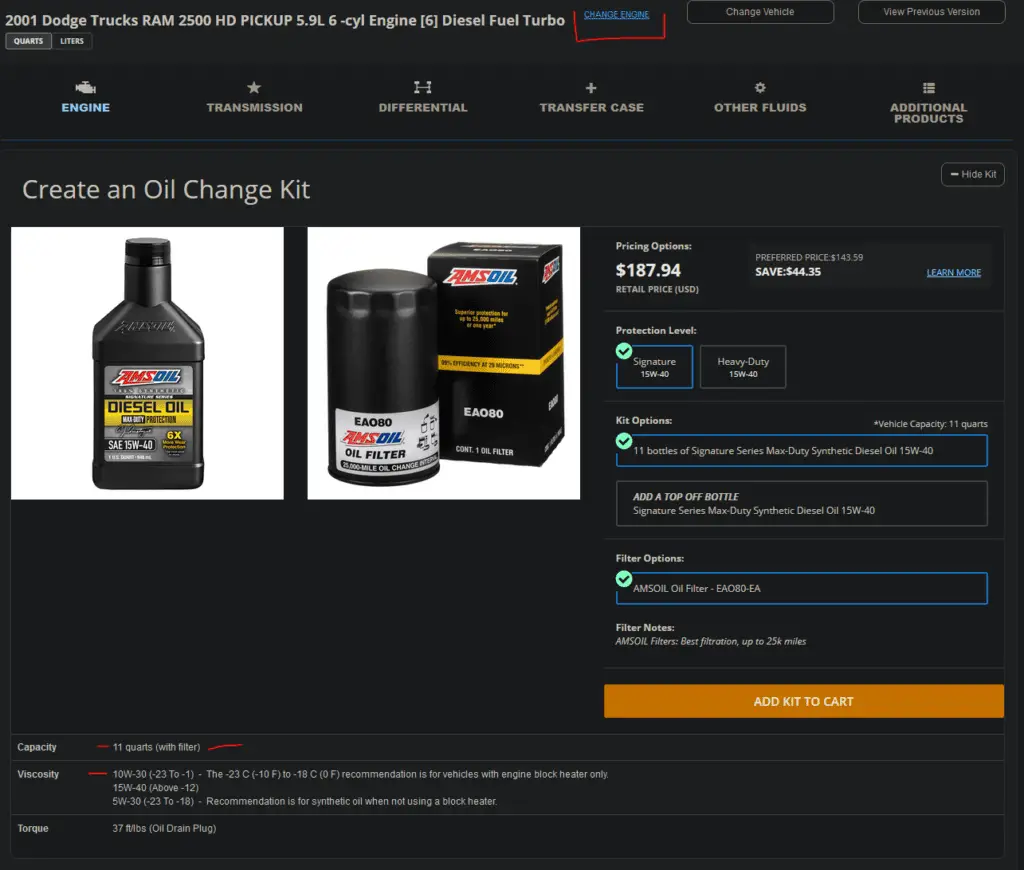
How Can I Prevent Overfilling?
It’s already been established that overfilling your engine’s fill port is bad. One of the easiest ways to prevent this from happening is by going slow. Use a funnel and add the oil. Periodically, lift the funnel. Let everything settle. Use the dipstick to check the levels.
You should also familiarize yourself with the oil capacity. If you don’t buy more oil than what your car can hold, you won’t have to worry about overfilling – or at least overfilling by a lot.
What Happens if I Spill?
Especially if you’re not using a funnel, you’ll want to have a steady hand. The moment that you spot oil anywhere beyond the fill point, you’ll want to use a rag to clean it up.
If you’ve managed to get oil on the manifold or elsewhere on the engine, use a spray can of No products found.. It will cut through the grease so that you can wash it away. Once the oil has been fully dissolved, hose it down with water.
Genius Asian has an in-depth guide to pouring oil or making a quick funnel. Check his vid out!
Is it Bad to Slightly Overfill Oil?
Overfilling your engine can be dangerous. But how much is too much? Well that’s tough to answer…
Most mechanics will recommend that you don’t go more than a smidge above the max-level. Anything that is 0.3” over the max level should be siphoned off so that you don’t cause damage to your engine.
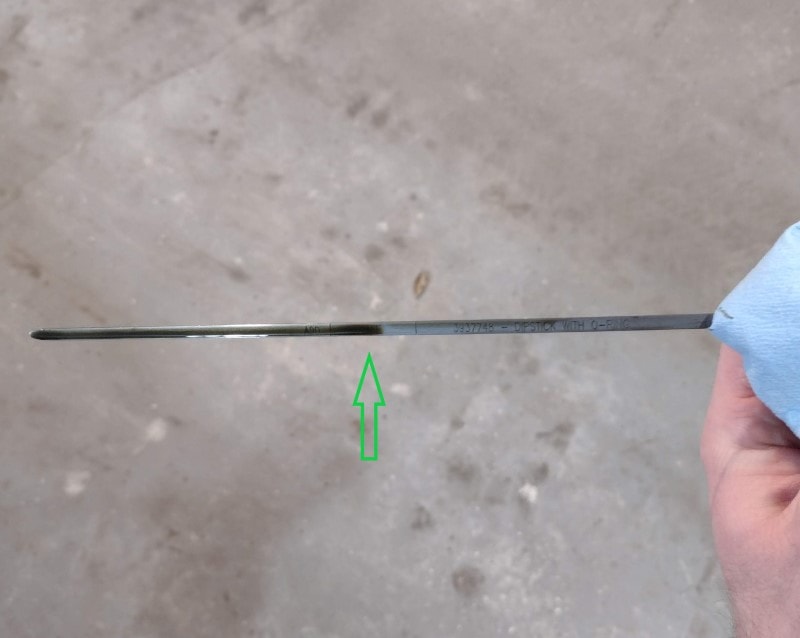
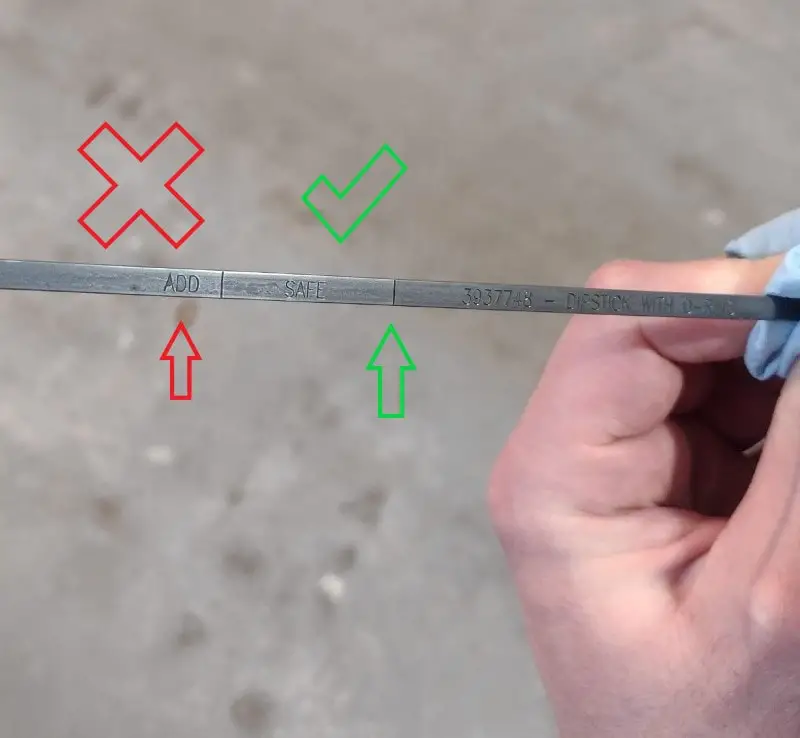
Symptoms of Too Much Oil
It’s important to understand the symptoms of too much oil. Particularly if you don’t recognize that you’ve overfilled the engine during the oil change, you have to pay attention. Any time you’ve completed an oil change, you should monitor the engine performance over the next several days. It’s a good idea to pull the dipstick and check the levels as well.
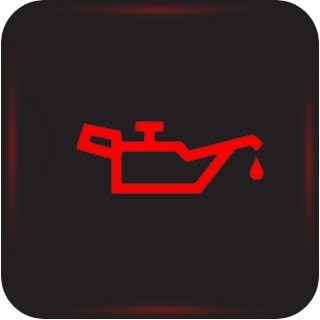
In Gasoline Engines
When you put too much oil inside of your gas engine, there are some symptoms to look out for.
- Engine makes a lot of noise
- Acceleration becomes difficult
- Engine is stalling or misfiring
- Engine won’t start
- Car is overheating
- ‘Check engine’ light comes on. Oil pressure light may come on if you have one.
There are a few other issues that you may notice as well, such as the smell of engine oil – either in the engine compartment or coming out of the exhaust pipe.
In Diesel Engines
If you put too much oil into your diesel engine, you’ll notice many of the symptoms as noted above. You may also notice a few other things:
- Oil leaks showing up under your car
- Blue exhaust smoke
- High reading on oil pressure gauge
Additionally, you may find that extra oil can also cause liner and piston ring wear as well as piston rings either getting stuck or breaking.
In Hybrid Engines
There’s a common misconception that hybrids and plug-in hybrids don’t require oil changes. They have the same requirements as gas and diesel engines because of the combustible engine in place.
Once you realize that you need an oil change, there may be the desire to overcompensate by using more oil than necessary. Even if you’re changing the filter and emptying out all of the existing oil, it cannot take more oil than it is designed to hold.
There will be a few specific signs that you may have added too much oil:
- Check engine light
- Smell of burning oil
- Poor engine performance
Depending on the model of your hybrid, you may have extended oil change intervals. However, there are well-known issues regarding engine sludge in hybrids. If you’re not getting your engine up to its peak temperature frequently, excess water vapor won’t evaporate. It creates sludge and corrosion inside of the engine, resulting in various engine repairs.
The moment you identify a problem with the engine oil, it’s best to address it so you don’t encounter longevity issues.
How Do I Remove Excess Oil from My Car?
When you’ve realized that you have too much oil in the reservoir, you’ll want to remove the excess. There’s a simple process, though it can be messy and time-consuming.
The oil plug method: If you’re familiar with performing an oil change, you know about the oil plug. You can drain the oil from under your car. You’ll need a drain pan and a socket wrench. If you CAREFULLY AND SLOWLY unscrew that bolt with your hand you might be able to vent some of the oil. Watch out though because if you screw it out too much, all the oil with drain out and you gotta start fresh…
If you’re proactive, next time you change the oil, swap that bolt out for a ‘Finger Touch’ engine oil drain valve like the one below (found on Genos garage). These valves make oil changes so much easier!
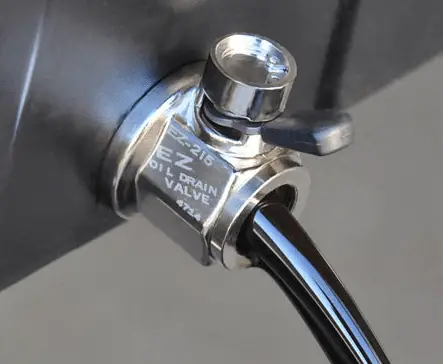
The suction pipe method: The easiest option is to feed a suction pipe in where the dipstick usually is. You can pull the excess oil out this way. Depending on how much you have, it can require a bit of time. There are also pumps available that will speed up the process, especially if you have a larger engine that holds a gallon or more of oil.
If you brought your car to a professional and found out that they overfilled your engine oil, you’ll want to bring it to their attention right away. They would be (or should be) responsible for removing excess oil. If there are any damages because of the added oil, they would be responsible for that, too.
Can you drive a car with too much oil?
You can drive a car with too much oil. However, you’re likely to notice some differences in performance – including smoke and a burning smell. If you have TOO much oil and drive for too long, you can ruin your motor.
How do you know if you put too much oil in your car?
If you see oil overflowing from the oil fill port, it’s your first sign that it’s overfilled. Otherwise, you can do a quick check with the dipstick and look for the fill line. Check for smoke from the engine bay or tailpipe.
Does it matter whether I’ve overfilled with conventional or synthetic oil?
Regardless of the oil type, an overflow will cause issues. The reason is that it adds pressure to the overall system, creating leaks in gaskets and seals. Conventional motor oil is more flammable than synthetic motor oil, however.
How much damage can be created?
It depends significantly on how much engine oil was added and how long it’s been allowed to sit on the various engine components. When you know you’ve had engine oil sitting under the hood for a while, it may be necessary to have it checked out by a certified mechanic.
What’s the fastest way to remove excess engine oil?
Depending on how much engine oil you need to remove, you can use two methods. For a small amount, use a syringe. For a large amount, use a siphon pump. If you have a EZ valve, just dump a few ounces into a bottle.
Can I reuse excess engine oil?
Sometimes…. We dont recommend it for most people though unless you know what you’re doing. You can recycle and reuse engine oil as it is an eco-friendly approach. Most auto parts stores or land fills will accept your used motor oil.
Is it better to have too little oil?
No. You want to achieve a happy balance. When an engine has insufficient oil levels, you end up with increased friction on the engine parts. Your engine may run hotter. Plus, parts could seize up if they don’t get enough lubrication from the oil.
If you need some oil, check out our recommended oil selections.
